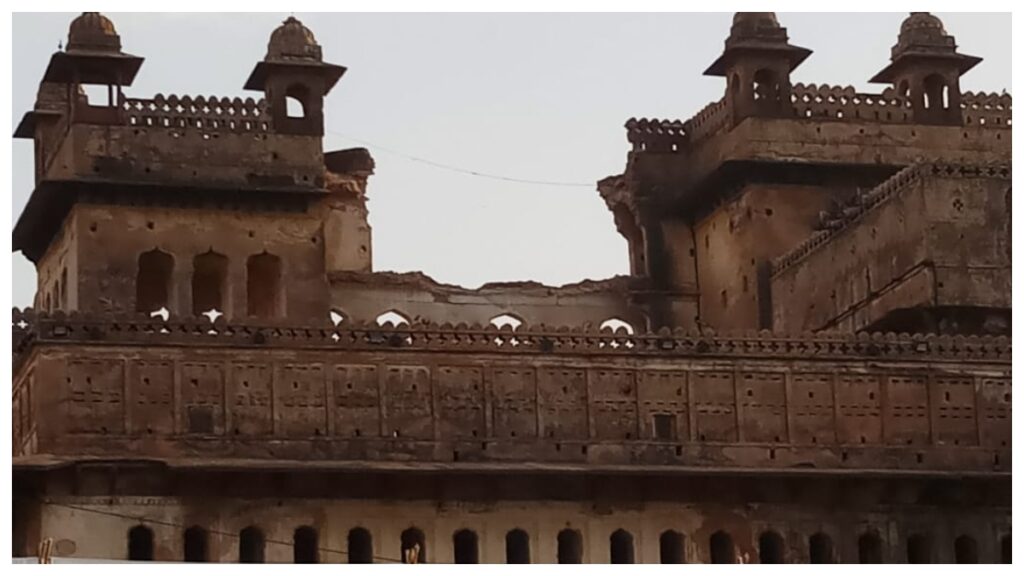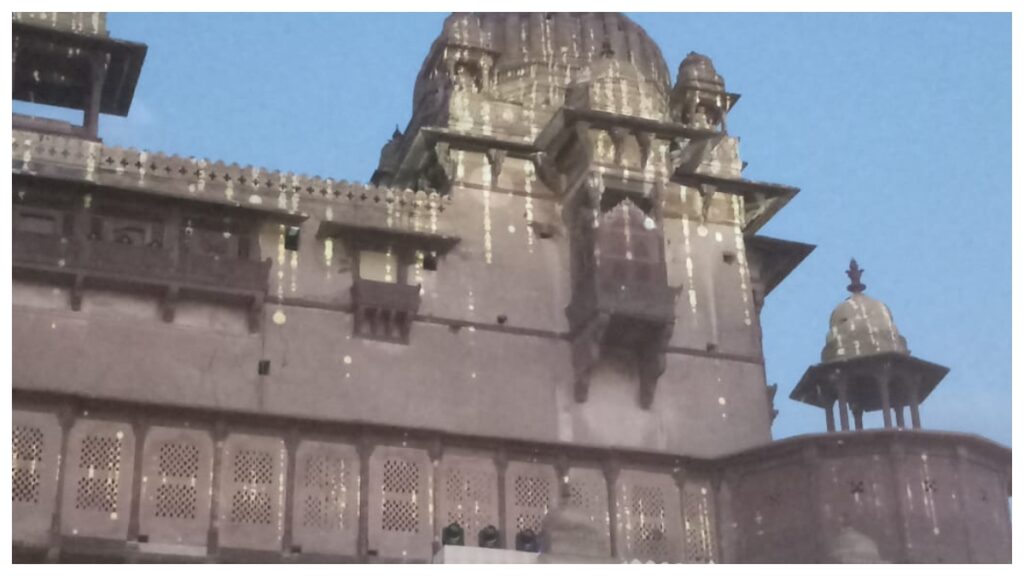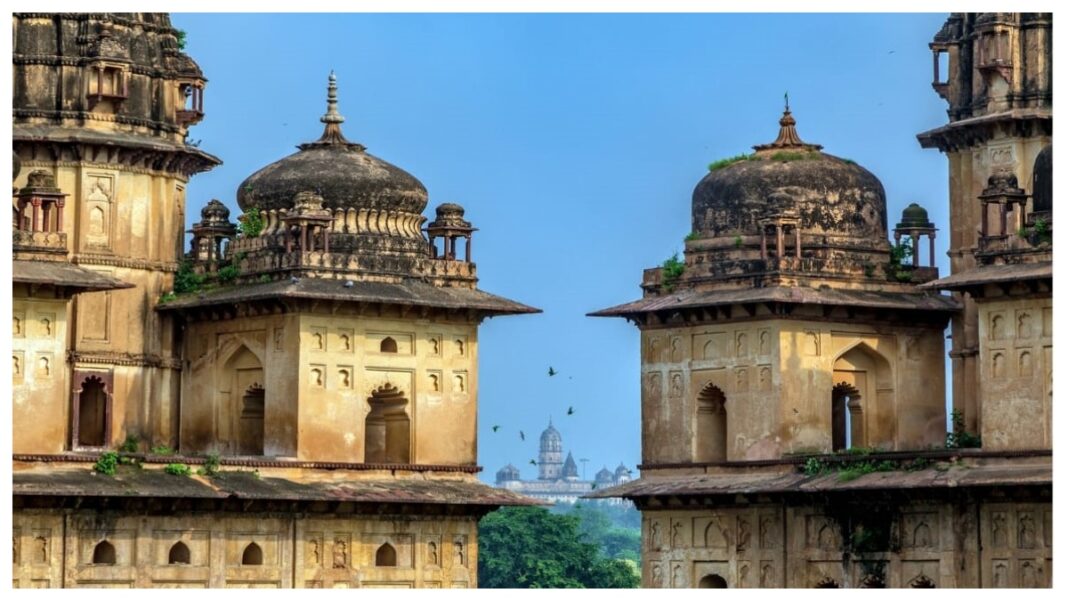INDIA. Madhya Pradesh: Imagine traveling to a town where calmness engulfs you and the river Betwa welcomes you with its soothing waters. Where forts and cenotaphs stand high, and where every temple has a fascinating story to tell. Certainly, this is going to be a once-in-a-lifetime experience for anyone. This is what happened to me when I had recently visited Orchha, a forgotten medieval capital in the heart of India’s Madhya Pradesh, for the ‘Namaste Orchha’ festival. This picturesque little town mesmerized me with its glory. This town was founded by the Bundela chief Rudra Pratap Singh in the early 16th century.
Read Also: Chek Jawa Wetlands At Pulao Ubin
If you love geometry, symmetry and can appreciate the beauty hidden in the stones and also have the sense to feel the architecture of a glorious place, then Orchha is a place for you. Despite centuries-old, the temples, chhatris, and fort are not in poor condition and still invites you with galore. Here, the river Betwa splits into seven channels and is called ‘Satdhara’. It is believed that this name is given to honor the seven former ‘Chiefs of Orchha’.
Orchha Fort – sign of the glorious past
After reaching the Orchha palace, I felt that its vastness and grandeur is saying something to me in a whispering tone-as if it was asking me to soak in the history of its rich and lively past. The Orchha fort has two sections – Raja Mahal and Jahangir Mahal. It also houses Rani Mahal and Rai Praveen Mahal which is set in an open quadrangle.
Raja Mahal represents the Bundela architecture, on the other hand, the Jahangir Mahal is a true depiction of Mughal architecture. Jahangir Mahal was built for Jahangir, who after having fought with Akbar had left his family and happened to reach this place ruled by the Bundela chief, Bir Singh Deo, who gave shelter to him. Just because Jahangir stayed there, this palace was built to commemorate his visit.
Raja Mahal, the King’s Palace, has hanging balconies and gardens. A spectacular view of the river Betwa can be seen from the terrace of this huge palace. The palace was made by Raja Madhukar Shah and is situated to the right of the quadrangle. The plain exteriors crowned by chhatris give way to the interiors which as some exquisite murals and based on religious themes.
The Rai Praveen Mahal was built for the poetess and musician, Rai Praveen, who was the mistress of Raja Indramani. This two-storied brick structure was designed in a way to match the height of the trees in the surroundings.

Chhatris-medieval wonders
The Chhatris or cenotaphs, near the Betwa river, stands tall and still against the sky in a line. You can walk for hours to watch these medieval wonders. These 14 cenotaphs were built by the families of Bundela kings who ruled Orchha, to pay homage to them. Spire shaped Chhatris reveal unmatched craftsmanship. However, amid this group is a cenotaph that doesn’t belong to the Rajput architecture and was built in the memory of Bundela chieftain, Bir Singh Deo.
Tales of the Temples
Orchha is a kingdom of Raja Ram who is worshipped here as a king, not a God. There is an interesting story related to the construction of the Raja Ram Mandir. King Madhukar Shah Ju Dev was a Krishna devotee and his queen Ganesh Kunwari, was an ardent Ram devotee. According to the story, she wanted to bring an idol of Lord Ram in her home. However, his husband didn’t approve of it and they had a fight over this issue. Due to that, she throws herself in the Sarayu river and then Raja Ram himself appears as a little boy, agreeing to go with her as an idol to Orchha. However, he keeps a condition in front of her. The condition was that the idol should not be kept anywhere in the ground during the travel.
At that time Chathurbhuj temple was under construction, as King Madhukar said he wanted to see God from the palace window, which stands just opposite of it. Hearing this, Ram refused to stay at the Raja Ram mandir. He decided to stay at Rani Mahal and it is believed that he is still resting there.
The architecture of the temple, although very simple, reminded me of the temples of South India. Even today, like the previous time, the sentry gives a salute with guns, when the temple opens and closes. As you enter the temple, you will find cannons on both sides. This golden brownstone temple has lots of rooms. I had a chance to sit back along the river and hear the tales and folklore from the locals about the temple. People love to talk about their Raja Ram here.
Just adjacent to the Chaturburj temple, there are secret passages. The 202-meter-high temple has a deity of Vishnu which has four arms along with Krishna and Radha. It is built upon a massive stone platform and reached by a steep flight of steps. Different religious symbols, lotus emblems, jharokhas, and chevets add grandeur to its interior and exterior.
Laxminarayan temple is a unique mix of fort and temple architecture. Built by Vir Singh Deo around 1622 but reconstructed around 1793 by Prithvi Singh. One can see frescoes and paintings hanging on the temple walls. It has geometrical carvings of scenes from the life of Lord Krishna, Ramayana, the life of a king, etc.





